|
Related FAQs: Soft Corals of the Family Alcyoniidae,
Alcyoniids 2, Alcyoniids 3, Alcyoniids 4, Alcyoniid ID, Alcyoniid Selection, Alcyoniid Compatibility, Alcyoniid Systems, Alcyoniid Feeding, Alcyoniid Behavior, Alcyoniid Health, Alcyoniid Disease
2, Alcyoniid Disease 3, Alcyoniid Disease 4, Alcyoniid Disease 5, Alcyoniid Disease 6, Alcyoniid Disease 7, Alcyoniid Disease 8, Alcyoniid Disease 9, Alcyoniid Health 10, Alcyoniid Disease 11, Alcyoniid Health 12, Alcyoniid Disease 13, Alcyoniid Disease 14, Alcyoniid Disease 15, & Alcyoniid
Propagation, Soft Coral
Propagation, Soft Coral
Health, Dyed
Corals,
Related Articles: Soft Corals,
Order Alcyonacea,
/The Best Livestock For Your Reef Aquarium:
Soft Corals of the Family Alcyoniidae,
pt. 2
To: Part.
1,
Part 3,
Part 4, Part 5,
Part 6
|
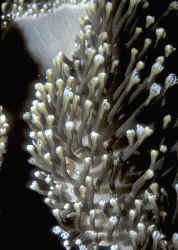
|
|
By Bob Fenner
|
Sarcophyton
|
Genus Minabea:
| Minabea aldersladei Williams
1992. Finger shaped colonies to two inches in height, orange to
yellow in color. Western Pacific. Two types of polyps extend during
the night, covering the colony. In Pulau Redang, Malaysia and N.
Sulawesi, closed during the day. |
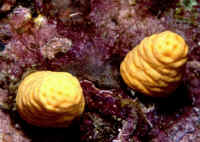 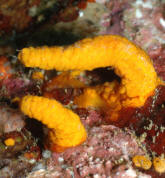
|
Bigger PIX:
The images in this table are linked to large
(desktop size) copies. Click on "framed" images to go to
the larger size. |
|
%20MD.JPG)
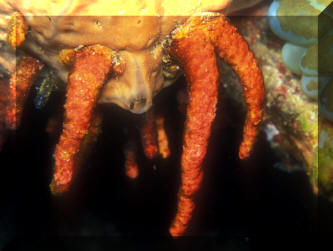
|
Genus Rhytisma Alderslade 2000: Thin encrusting mats that are
often ribbon-like, of 2/4 mm depth. Have large gastric cavities that
appear to burst right out of the basal mat membrane. Reproduction is
mainly asexual, through fragmentation.
| Rhytisma fulvum (Forsskal 1775),
Sulfur Coral, Yellow Encrusting Leather Coral. Below: a colony and
close-up in the Andaman Sea off of Thailand in the Similans that is
about six inches across, and a typical creeping colony in the Red
Sea. |
| Rhytisma fulvum (Forskal 1775). Forming thin,
yellow/ish colonies over dead corals. Red Sea, open and closed
colonies. |
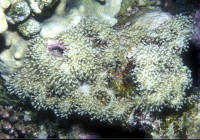 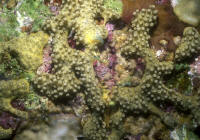
|
Bigger PIX:
The images in this table are linked
to large (desktop size) copies. Click on "framed" images
to go to the larger size. |
|
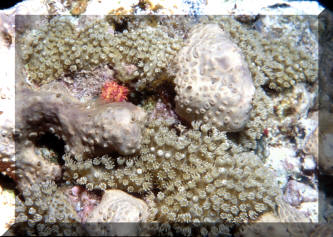
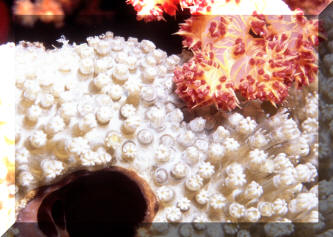
|
Genus Sarcophyton: Mushroom, Leather, Cup Leather Coral
| Shedding... An important aspect of Sarcophyton
captive husbandry is their periodic sloughing of skin/mucus, sand
et al... this is one shedding in the wild off of Queensland,
Australia. Do vacuum, remove this material. |
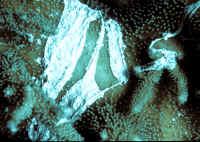
|
| Sarcophyton crassocaule Cebu, Philippines
and Fiji. |
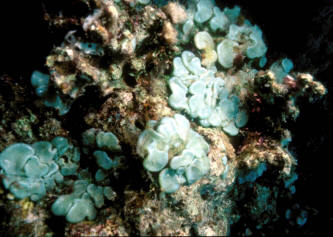
|
| Verticals (Full/Cover
Page Sizes Available) |
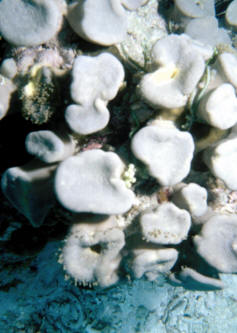 |
| Sarcophyton ehrenbergii Marenzeller 1885.
Common in the Indo-Pacific and aquariums. Laterally compressed
colonies with deep disks. Feeds by way of photosynthesis and
plankton. AQ pic. |
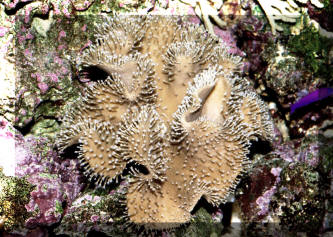
|
| Sarcophyton glaucum (Quoy & Gaimard
1833), Red Sea, Indo-Pacific. Hardy, easily reproduced
asexually. To one foot in diameter. Feeds on plankton or similar
material. A small and tiny one fully open in Pulau Redang,
Malaysia. |
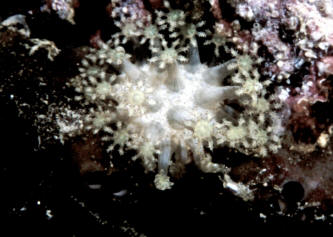
|
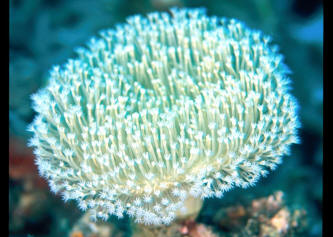 |
To: Part.
1,
Part 3,
Part 4, Part 5,
Part 6
|
|

